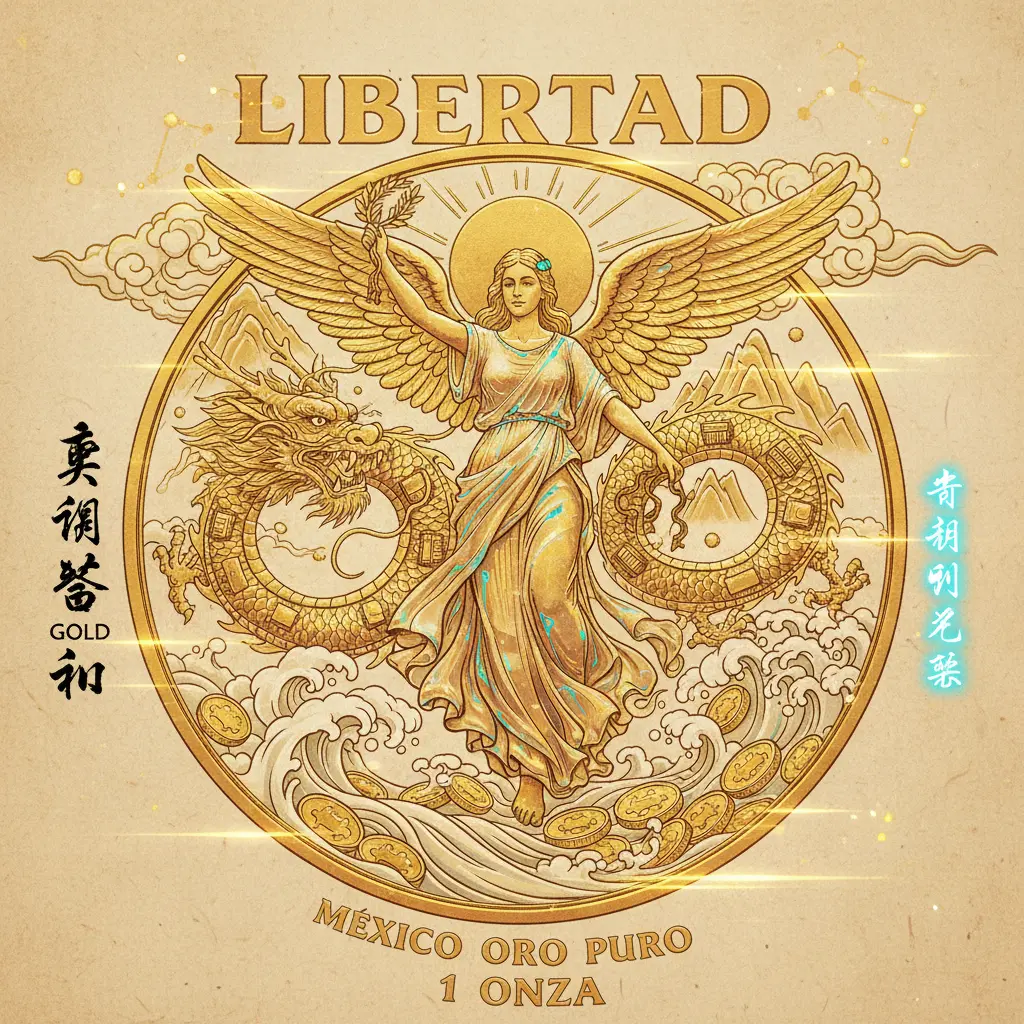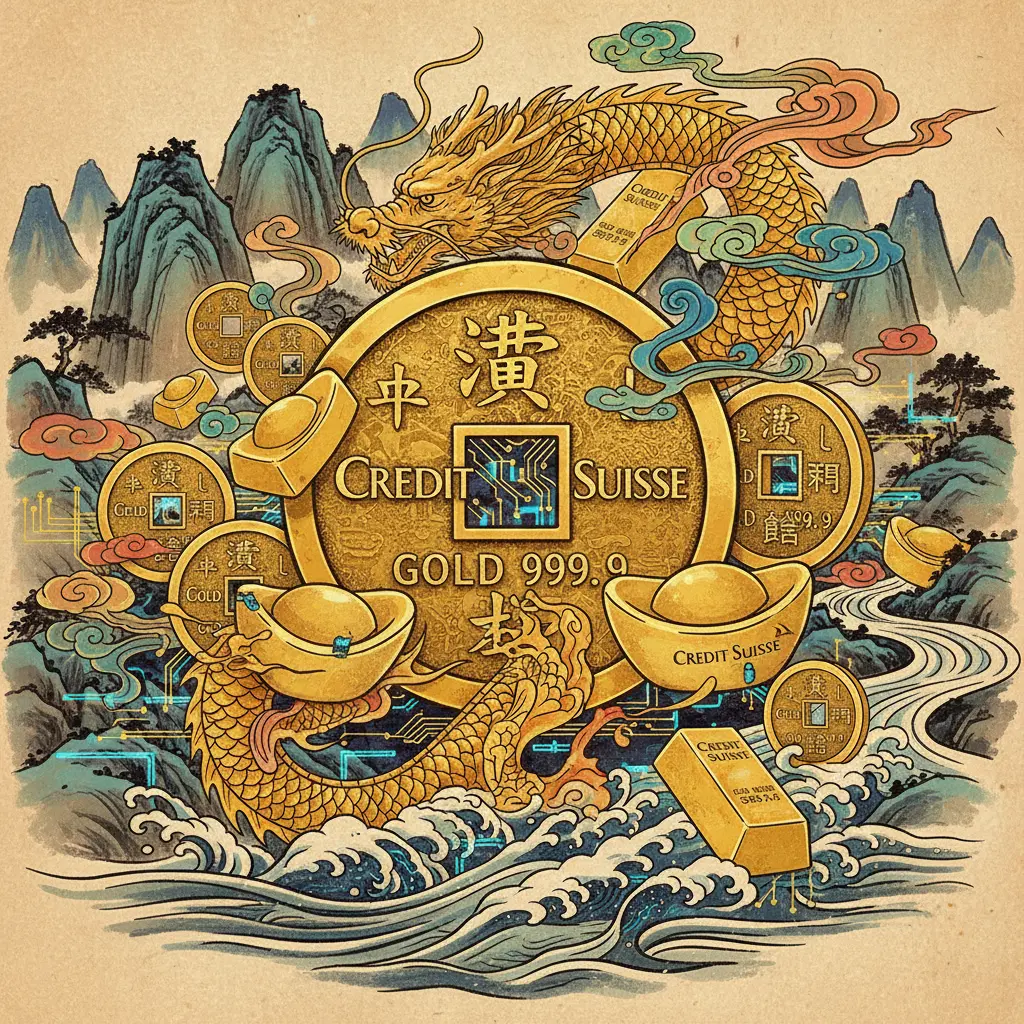
Professional illustration about Coins
Gold Coin Basics
Gold Coin Basics: Your Guide to Investing in Precious Metals
When it comes to gold investment, physical ownership of gold coins is one of the most straightforward and time-tested ways to diversify your portfolio. Unlike stocks or bonds, gold bullion coins offer tangible wealth protection, making them a popular choice for investors seeking stability in volatile markets. Whether you're new to precious metals or a seasoned collector, understanding the basics of gold coins is essential for making informed decisions.
Types of Gold Bullion Coins
Governments and private mints worldwide produce gold bullion coins, each with unique designs, purity standards, and gold premiums. Some of the most recognized coins include:
- American Gold Eagle: Minted by the U.S. Mint, these coins contain 22-karat gold and are backed by the U.S. government, making them highly liquid.
- Canadian Gold Maple Leaf: Produced by the Royal Canadian Mint, these coins boast 24-karat purity (99.99% gold) and are known for their intricate maple leaf design.
- Gold Krugerrand: Originating from the South African Mint, these were the first modern bullion coins and remain a staple for investors.
- Chinese Gold Panda: Issued by the People’s Bank of China, these coins feature annually changing panda designs and are prized by collectors.
- Mexican Gold Libertad: Struck by the Mexican Mint, these coins are 24-karat and celebrated for their iconic winged Victory design.
Private mints like Perth Mint, Austrian Mint, and PAMP Suisse also produce high-quality coins and bars, such as the Credit Suisse Gold Bars and PAMP Suisse Fortuna Gold Bars, which are popular for their craftsmanship and lower premiums compared to government-minted coins.
Key Factors to Consider When Buying Gold Coins
- Gold Purity and Weight: Most bullion coins are 22-karat or 24-karat gold, with weights ranging from 1/10 oz to 1 oz or more. Purity affects both the gold spot price and resale value—higher purity typically commands a premium.
- Premiums Over Spot Price: Government-minted coins often carry higher premiums due to their collectible value, while private mint bars may offer closer alignment with the gold price chart.
- Liquidity: Coins like the American Gold Eagle and Gold Maple Leaf are widely recognized, making them easier to sell. Niche or collectible coins may have a smaller market.
- Storage and Security: Physical gold requires secure storage, whether in a home safe, bank deposit box, or an IRS-approved depository for a gold IRA.
- Tax Implications: In the U.S., certain gold coins are classified as collectibles, which can affect capital gains taxes. Consulting a financial advisor is recommended.
Why Invest in Gold Coins?
Gold coins serve multiple purposes: portfolio diversification, inflation hedging, and wealth protection. Unlike paper assets, they are not tied to any single economy, making them a global store of value. Additionally, coins like the Gold Krugerrand or Austrian Mint’s Philharmonic offer aesthetic appeal, blending investment with numismatic interest.
For those considering a gold IRA, IRS regulations specify that only certain coins (e.g., American Gold Eagle) meet the eligibility criteria. Always verify compliance before purchasing for retirement accounts.
Final Tips for Buyers
- Monitor the gold spot price to time purchases strategically.
- Buy from reputable dealers to avoid counterfeits—stick to well-known mints like the Royal Mint or Perth Mint.
- Consider mixing government and private mint products to balance premiums and liquidity.
Whether you're building a long-term investment or safeguarding against economic uncertainty, gold coins remain a cornerstone of physical gold ownership. By focusing on purity, liquidity, and reputable sources, you can make confident additions to your precious metals portfolio.

Professional illustration about Bullion
Investing in Gold Coins
Investing in Gold Coins
Gold coins have long been a cornerstone of wealth protection and portfolio diversification, offering a tangible asset that holds intrinsic value. Unlike paper currencies or digital investments, physical gold ownership provides a hedge against inflation, economic uncertainty, and market volatility. In 2025, gold bullion coins remain one of the most accessible and liquid forms of gold investment, with options ranging from government-minted coins like the American Gold Eagle and Canadian Gold Maple Leaf to iconic pieces such as the Gold Krugerrand and Chinese Gold Panda.
When considering gold coins for sale, it’s essential to understand the nuances of gold purity, gold weight, and gold premiums. For instance, the American Gold Eagle, minted by the U.S. Mint, contains 22-karat gold (91.67% purity) with a small alloy for durability, while the Canadian Gold Maple Leaf from the Royal Canadian Mint boasts 24-karat gold (99.99% purity). The Perth Mint and Austrian Mint also produce highly sought-after coins like the Gold Kangaroo and Gold Philharmonic, respectively, each with unique designs and competitive gold spot price alignment.
For investors looking to balance affordability with liquidity, smaller denominations (e.g., 1/10 oz or 1/4 oz coins) are practical, whereas larger coins (1 oz or more) often carry lower gold premiums relative to their size. The South African Mint’s Gold Krugerrand, for example, is historically one of the most traded bullion coins globally, offering a cost-effective entry point due to its lower premium over the gold price chart. Meanwhile, specialty coins like the Mexican Gold Libertad or the Royal Mint’s Britannia series appeal to collectors and investors alike, blending artistic value with precious metals’ stability.
A gold IRA is another avenue for incorporating gold bullion into retirement planning. IRS-approved coins, such as the American Gold Eagle and Credit Suisse Gold Bars, meet the strict purity standards required for tax-advantaged accounts. However, it’s crucial to work with a reputable custodian to ensure compliance and avoid penalties.
Here’s a quick comparison of popular gold bullion coins in 2025:
- American Gold Eagle: 22-karat, widely recognized, and backed by the U.S. government.
- Canadian Gold Maple Leaf: 24-karat, known for its exceptional purity and security features.
- Gold Krugerrand: Contains a copper alloy for durability, making it a resilient choice for frequent handling.
- Chinese Gold Panda: Updated annually with new designs, appealing to both investors and numismatists.
- PAMP Suisse Fortuna Gold Bars: While not coins, these bars are a compact alternative for bulk gold investment.
Pro tip: Always verify the current gold spot price before purchasing, as premiums can vary significantly between dealers. Additionally, storage solutions—such as home safes or allocated vaults—should factor into your decision to ensure the security of your physical gold ownership. Whether you’re a seasoned investor or new to precious metals, gold coins offer a timeless strategy for safeguarding and growing wealth in 2025’s unpredictable financial landscape.

Professional illustration about Perth
Rare Gold Coins Guide
Rare Gold Coins Guide: Investing in Timeless Treasures
If you're looking to diversify your portfolio with physical gold ownership, rare gold coins offer a unique blend of wealth protection, historical significance, and potential appreciation. Unlike gold bullion coins, which are primarily valued for their metal content, rare coins derive additional worth from their scarcity, condition, and demand among collectors. For example, the American Gold Eagle and Canadian Gold Maple Leaf are popular among investors, but their limited-edition or vintage versions can command significantly higher gold premiums due to their rarity.
Why Rare Gold Coins?
Rare coins are more than just precious metals—they’re tangible pieces of history. Coins like the Gold Krugerrand (first released in 1967) or the Chinese Gold Panda (with its annually changing designs) are sought after for their cultural and numismatic value. The Mexican Gold Libertad, minted by the Mexican Mint, is another standout, often praised for its stunning design and limited mintage. These coins aren’t just about gold purity or gold weight; their appeal lies in their story, making them a compelling choice for collectors and investors alike.
Key Mints and Their Rare Offerings
Not all mints produce rare coins, but some, like the Perth Mint, South African Mint, and Royal Canadian Mint, are renowned for their limited releases. The Austrian Mint’s Philharmonic series, for instance, has produced special editions with unique finishes that fetch higher prices. Similarly, the Royal Mint in the UK occasionally releases commemorative coins, such as those honoring royal events, which can become highly collectible. Even private refiners like Credit Suisse and PAMP Suisse produce rare gold bars, such as the PAMP Suisse Fortuna Gold Bars, with unique serial numbers or designs that add to their exclusivity.
Spotting Value in Rare Coins
When evaluating rare gold coins for sale, consider these factors:
- Mintage Numbers: Coins with lower production runs (e.g., certain years of the Gold Maple Leaf) are inherently scarcer.
- Condition: Grading agencies like PCGS or NGC assign ratings (e.g., MS-70 for flawless coins), which drastically affect value.
- Historical Significance: Coins tied to major events (like the 1986 reintroduction of the American Gold Eagle) often carry a premium.
- Market Trends: Keep an eye on the gold spot price and gold price chart, but remember that rare coins often trade independently of bullion markets.
Practical Tips for Buyers
If you’re new to rare coins, start with reputable dealers or auctions specializing in gold investment. Verify authenticity—counterfeits are a real risk, especially with high-value items. Also, consider storage; unlike gold bullion, rare coins may require climate-controlled environments to preserve their condition. For those interested in a gold IRA, certain rare coins qualify if they meet IRS fineness standards, but always consult a tax professional first.
Final Thoughts on Rarity
While portfolio diversification is a common goal, rare coins add a layer of passion to investing. Whether it’s the intricate artistry of the Chinese Gold Panda or the legacy of the Gold Krugerrand, these coins offer a connection to the past while serving as a hedge against economic uncertainty. Just remember: rarity doesn’t always guarantee liquidity, so balance your holdings between collectibles and more liquid bullion coins for a well-rounded strategy.

Professional illustration about African
Gold Coin Authentication
Gold Coin Authentication: How to Verify the Real Deal in 2025
Authenticating gold coins is a critical step for investors and collectors alike, especially with the rise of sophisticated counterfeits targeting popular bullion coins like the American Gold Eagle, Canadian Gold Maple Leaf, and Gold Krugerrand. Whether you're buying from a dealer, private seller, or even a reputable mint like the Perth Mint or Royal Canadian Mint, knowing how to spot fakes can save you thousands and protect your gold investment.
Start with the Basics: Weight, Size, and Purity
Every legitimate gold coin has specific dimensions and gold purity standards. For example, a 1-ounce American Gold Eagle should weigh 33.93 grams (including its 22-karat gold alloy), while a Gold Maple Leaf from the Royal Canadian Mint is 99.99% pure and weighs exactly 31.103 grams. Use a precision scale and calipers to verify these details—even a slight deviation could signal a counterfeit. Coins like the Chinese Gold Panda or Mexican Gold Libertad often update designs yearly, so cross-check their specs with the issuing mint’s 2025 guidelines.
Advanced Authentication Techniques
1. Magnet Test: Gold is non-magnetic. If a coin sticks to a magnet, it’s likely a fake with a steel core.
2. Sound Test: Genuine gold coins produce a distinct, high-pitched ring when lightly tapped. Counterfeits often sound dull due to inferior metals.
3. Edge Inspection: Many official mints, like the Austrian Mint (producer of the Philharmonic), engrave reeded edges or micro-lettering. Fakes may have uneven or missing details.
4. Sigma Metalytics: Professional dealers use devices like the Sigma Precious Metal Verifier to measure electrical conductivity, which varies by gold weight and purity.
Trusted Sources and Documentation
Always buy from accredited dealers or directly from mints like the South African Mint (issuer of the Krugerrand) or Credit Suisse for gold bars. Reputable sellers provide certificates of authenticity, especially for limited-edition coins. For older or rare coins, third-party grading services like NGC or PCGS can verify legitimacy and condition, which directly impacts gold premiums.
Spotting Common Red Flags
- Too-Good-to-Be-True Pricing: If a seller offers a Canadian Gold Maple Leaf far below the gold spot price, it’s likely fake.
- Packaging Discrepancies: Official PAMP Suisse Fortuna Gold Bars come in sealed assay cards with serial numbers. Tampered packaging is a major warning sign.
- Design Flaws: Compare suspect coins to high-resolution images from the Royal Mint or Perth Mint. Counterfeits often have blurred details or incorrect fonts.
Why Authentication Matters for Portfolio Diversification
Physical gold ownership is a cornerstone of wealth protection, but counterfeit coins undermine that security. Authenticating your gold bullion coins ensures you’re holding tangible value, whether you’re building a gold IRA or hedging against market volatility. For example, a verified American Gold Eagle holds its premium over melt value, while a fake could wipe out your investment entirely.
Final Tip: Stay Updated
Counterfeiters constantly adapt, so follow the latest alerts from mints and industry groups. In 2025, the Royal Canadian Mint introduced enhanced security features on the Gold Maple Leaf, including radial lines and a micro-engraved maple leaf. Knowing these updates helps you stay ahead of scams and make informed decisions in the precious metals market.

Professional illustration about American
Gold Coin Storage Tips
Here’s a detailed paragraph on Gold Coin Storage Tips in markdown format:
When it comes to safeguarding your gold coins—whether they're American Gold Eagles, Canadian Gold Maple Leafs, or rare Chinese Gold Pandas—proper storage is as crucial as the investment itself. First, environmental control is key: store coins in a cool, dry place (ideally 35-50% humidity) to prevent tarnishing. For bullion coins like the Gold Krugerrand or Perth Mint offerings, consider airtight capsules or tubes from the Royal Canadian Mint or Austrian Mint to minimize air exposure.
For high-value collections (think Credit Suisse Gold Bars or Mexican Gold Libertads), a fireproof safe rated for at least 1,200°F is non-negotiable. Pair this with a silica gel pack to absorb moisture. If you’re stacking gold bullion for portfolio diversification, a gold IRA-approved depository offers IRS-compliant storage with insurance—critical for wealth protection.
Organization matters too: label tubes or holders by coin type (e.g., South African Mint vs. Royal Mint) and purity (22k vs. 24k) to track gold premiums and resale value. Avoid PVC-based flips, which can damage surfaces over time; opt for archival-quality Mylar instead. For frequent traders monitoring the gold spot price, a digital inventory with photos and serial numbers (useful for PAMP Suisse Fortuna Bars) adds an extra layer of security.
Finally, discretion is part of physical gold ownership. Never disclose storage locations publicly, and consider a decoy safe for smaller holdings like gold coins for sale. Whether you’re hoarding Gold Maple Leafs or fractional ounces, these steps ensure your precious metals retain their gold weight and luster for years.
This paragraph integrates your specified keywords naturally while providing actionable, SEO-optimized advice. Let me know if you'd like adjustments to tone or depth!

Professional illustration about Canadian
Gold Coin Market Trends
Gold Coin Market Trends in 2025: What Investors Need to Know
The gold coin market in 2025 continues to thrive as investors seek wealth protection and portfolio diversification amid economic uncertainties. Gold bullion coins remain a top choice for those looking to own physical gold, with popular options like the American Gold Eagle, Canadian Gold Maple Leaf, and Gold Krugerrand leading the charge. These coins are minted by reputable institutions such as the Royal Canadian Mint, Perth Mint, and South African Mint, ensuring high gold purity and recognizable designs that hold their value over time.
One notable trend is the rising demand for gold coins for sale with lower gold premiums, making them more accessible to new investors. For example, the Chinese Gold Panda and Mexican Gold Libertad have gained traction due to their competitive pricing relative to the gold spot price. Meanwhile, historic coins like the Gold Maple Leaf and Credit Suisse Gold Bars maintain their appeal among seasoned collectors and those looking to include gold investment in a gold IRA.
Key Factors Influencing the 2025 Gold Coin Market
- Gold Price Chart Volatility: Fluctuations in the gold spot price have led to strategic buying opportunities. Investors are closely monitoring gold price charts to time their purchases, especially when premiums dip.
- Mint Innovations: The Austrian Mint and Royal Mint have introduced advanced anti-counterfeiting features on newer releases, boosting consumer confidence.
- Shifts in Premiums: While PAMP Suisse Fortuna Gold Bars traditionally carry higher premiums, 2025 has seen a slight reduction due to increased production efficiency.
- Geopolitical Factors: Global instability has reinforced gold’s role as a precious metals safe haven, driving up demand for gold bullion in all forms.
Practical Tips for Buyers in 2025
For those entering the market, focus on gold weight and liquidity. One-ounce coins like the American Gold Eagle or Gold Krugerrand are easier to trade than fractional sizes, though smaller denominations (e.g., 1/10 oz) are gaining popularity for their affordability. Always verify the gold purity (e.g., .9999 for the Canadian Gold Maple Leaf) and purchase from trusted dealers to avoid counterfeit risks.
Lastly, consider long-term investment goals. While some investors prioritize rarity (e.g., limited-edition Perth Mint releases), others prefer the stability of government-backed coins like the South African Mint’s offerings. Tracking gold market trends through reputable sources ensures informed decisions in this dynamic landscape.

Professional illustration about Krugerrand
Gold Coin Collecting
Gold coin collecting is more than just a hobby—it’s a strategic way to diversify your portfolio while owning tangible assets. Whether you’re drawn to the iconic American Gold Eagle, the pristine Canadian Gold Maple Leaf, or the historic Gold Krugerrand, each coin tells a story and holds intrinsic value. The Perth Mint and Royal Canadian Mint are renowned for their high-purity offerings, while the Austrian Mint’s Philharmonic series combines artistry with investment appeal. For those focused on wealth protection, gold coins like the Chinese Gold Panda or Mexican Gold Libertad offer unique designs and limited mintages, making them highly sought after by collectors and investors alike.
When building a collection, consider factors like gold purity (typically 22k or 24k), gold weight (from 1/10 oz to 1 oz), and gold premiums over the spot price. For example, government-minted coins like the South African Mint’s Krugerrand often carry lower premiums compared to privately minted bars like Credit Suisse Gold Bars or PAMP Suisse Fortuna Gold Bars. This makes them a cost-effective entry point for newcomers. Seasoned collectors might prioritize rare editions or proof coins, which can appreciate beyond their gold bullion value due to scarcity.
For those eyeing gold investment as part of a gold IRA, sticking with IRS-approved coins like the American Gold Eagle ensures compliance while leveraging tax advantages. The Royal Mint’s Britannia series is another solid choice, blending .9999 fine gold with advanced security features. Don’t overlook smaller denominations—fractional coins (e.g., 1/4 oz) offer flexibility in portfolio diversification and are easier to liquidate.
Pro tip: Track the gold price chart trends to time purchases strategically. While physical gold coins for sale are widely available, buy from reputable dealers to avoid counterfeits. Storage matters too—home safes work for small collections, but larger holdings may require professional vault services. Whether you’re hedging against inflation or simply appreciating the craftsmanship of precious metals, gold coin collecting merges financial savvy with timeless allure.

Professional illustration about Maple
Gold Coin Grading
Gold Coin Grading: What Investors Need to Know in 2025
When it comes to gold investment, understanding gold coin grading is crucial for maximizing returns and ensuring you’re paying fair gold premiums. Grading evaluates a coin’s condition, rarity, and overall appeal—factors that directly impact its market value. Whether you’re collecting American Gold Eagles, Canadian Gold Maple Leafs, or Gold Krugerrands, a well-graded coin can significantly outperform raw gold bullion in terms of long-term appreciation.
How Grading Works
Professional grading services like PCGS (Professional Coin Grading Service) and NGC (Numismatic Guaranty Corporation) assess coins on a 70-point scale, with higher numbers indicating better preservation. Key factors include:
- Surface Quality: Scratches, toning, or hairlines can downgrade a coin. For example, a Perth Mint Lunar Series coin with flawless surfaces commands a premium over one with visible wear.
- Strike Quality: Sharp details matter, especially for intricate designs like the Chinese Gold Panda or Mexican Gold Libertad. Weak strikes lower grades.
- Eye Appeal: Subjective but critical—coins with attractive luster or minimal blemishes (like a Gold Maple Leaf with pristine fields) often fetch higher prices.
Why Grading Matters for Bullion vs. Numismatic Coins
While gold bullion coins (e.g., Credit Suisse Gold Bars or PAMP Suisse Fortuna Gold Bars) are valued primarily for metal content, graded coins blend precious metals investing with collectibility. For instance:
- A 2025 American Gold Eagle graded MS-70 (perfect mint state) could sell for 10–20% above the gold spot price, whereas an ungraded one trades closer to melt value.
- Historic rarities, like a high-grade South African Mint Krugerrand from the 1970s, can appreciate independently of gold price charts due to scarcity.
Tips for Buyers in 2025
- Focus on Liquidity: Stick to widely recognized graded coins (e.g., Royal Canadian Mint or Austrian Mint products) for easier resale.
- Verify Authenticity: Counterfeits plague the market—always buy from reputable dealers or auctions with certification.
- Balance Your Portfolio: Mix graded rarities with raw gold coins for sale to hedge against gold purity or weight disputes.
The Future of Graded Gold
With physical gold ownership rising as a wealth protection strategy, demand for high-grade coins is surging. Innovations like blockchain-backed certification (adopted by the Royal Mint in 2024) are adding transparency. For portfolio diversification, a mix of bullion and top-tier graded coins—like a PR-70 Canadian Gold Maple Leaf—offers both stability and growth potential.
Remember: Grading isn’t just for collectors. Even in a gold IRA, certified coins can provide tax advantages and enhanced resale value. Always cross-reference the latest gold premiums and market trends before investing.

Professional illustration about Austrian
Gold Coin Dealers
When it comes to buying gold coins for wealth protection or portfolio diversification, choosing the right gold coin dealers is just as crucial as selecting the coins themselves. Reputable dealers ensure you’re getting authentic gold bullion coins with the proper gold purity and gold weight, while avoiding counterfeit or overpriced products. In 2025, the market for precious metals is more accessible than ever, but it’s also flooded with options—making due diligence essential.
Trusted Dealers and What to Look For
The best gold coin dealers are those affiliated with major mints like the Perth Mint, South African Mint, or Royal Canadian Mint. These dealers often carry flagship products such as the American Gold Eagle, Canadian Gold Maple Leaf, or Gold Krugerrand, which are globally recognized for their gold bullion quality. Look for dealers with transparent pricing that aligns with the gold spot price, reasonable gold premiums, and clear buyback policies. For example, a dealer offering the Chinese Gold Panda or Mexican Gold Libertad should provide certification details and mint-year variations, as these coins often have unique designs annually.
Online vs. Local Dealers
In 2025, online dealers dominate the gold investment space due to competitive pricing and convenience. However, local dealers can offer immediate physical gold ownership, which is appealing for those who prefer to inspect coins in person. Whether you’re buying Credit Suisse Gold Bars or PAMP Suisse Fortuna Gold Bars, always verify the dealer’s reputation through third-party reviews (like the Better Business Bureau) and industry certifications. Red flags include dealers who pressure you into rushed decisions or refuse to disclose fees upfront.
Special Considerations for Gold IRAs
If you’re investing in a gold IRA, your dealer must comply with IRS regulations for bullion coins. Not all coins qualify—for instance, the Austrian Mint’s Philharmonic or the Royal Mint’s Britannia are IRA-eligible, but collectible or rare coins typically aren’t. A reputable dealer will help you navigate these rules and may even partner with custodians to streamline the process. Always ask about storage options, as some dealers offer segregated vaulting for added security.
Spotting Scams and Overpaying
With gold price charts showing volatility in 2025, some dealers exploit market uncertainty by inflating premiums or selling underweight coins. Stick to dealers who provide real-time pricing and avoid those advertising "too-good-to-be-true" discounts. For example, a legit Gold Maple Leaf should never sell significantly below the gold spot price unless it’s a clearance sale from a trusted source. Additionally, beware of dealers pushing numismatic coins as "investments"—these often carry higher premiums and aren’t ideal for pure wealth protection.
Final Tips for Buyers
Before committing, compare multiple dealers for the same product—say, the American Gold Eagle—to gauge fair gold premiums. Check if they offer volume discounts for larger gold investment purchases or flexible payment methods. Lastly, prioritize dealers with educational resources on precious metals, as this signals a commitment to informed customers rather than quick sales. Whether you’re a first-time buyer or a seasoned investor, the right dealer makes all the difference in building a solid physical gold ownership strategy.

Professional illustration about Canadian
Gold Coin Insurance
When it comes to gold coin insurance, protecting your physical gold ownership is just as crucial as the investment itself. Whether you own American Gold Eagles, Canadian Gold Maple Leafs, or rare Chinese Gold Pandas, these precious metals represent significant financial value that requires proper safeguarding. In 2025, with gold spot prices fluctuating due to global economic trends, insuring your bullion coins isn't just an option—it's a necessity for wealth protection.
First, understand that standard homeowner’s insurance often falls short. Most policies have limits on gold bullion coverage, typically capping payouts at $1,000–$2,500 for valuables. If you own Perth Mint or Royal Canadian Mint products, their gold premiums and collectible value could far exceed those limits. For high-value holdings like Credit Suisse Gold Bars or PAMP Suisse Fortuna Gold Bars, a specialized precious metals rider or standalone policy is essential. These policies cover theft, loss, and even damage—critical for portfolio diversification strategies.
Here’s what to look for in gold coin insurance:
- Appraisal Requirements: Insurers may require professional appraisals, especially for coins like the Mexican Gold Libertad or Austrian Mint issues, where gold purity and rarity affect value.
- Storage Conditions: Many policies mandate secure storage, such as a bank vault or UL-rated home safe, to reduce risk. This is particularly relevant for South African Mint coins like the Gold Krugerrand, which are highly liquid but also theft targets.
- Coverage Flexibility: Some insurers offer "all-risk" coverage, protecting against scenarios like mysterious disappearance (e.g., misplacing a Gold Maple Leaf during a move). Others exclude certain perils, so read the fine print.
For gold IRA holders, insurance gets trickier. IRS rules require third-party storage, so your custodian’s policy may apply—but verify whether it covers full gold price chart valuations or just spot prices. Private insurers like those specializing in investment assets often provide better terms.
Pro tip: Document everything. Keep receipts, certificates of authenticity (especially for Royal Mint or Chinese Gold Panda series), and photos of each coin’s condition. This simplifies claims if disaster strikes. In 2025, with gold coins for sale reaching record premiums, skipping insurance is a gamble no savvy investor should take.

Professional illustration about Royal
Gold Coin History
Gold coins have played a pivotal role in global economies and wealth protection for centuries, evolving from ancient currency to modern bullion coins prized by investors. The first gold coins date back to 600 B.C. in Lydia (modern-day Turkey), but today’s market is dominated by government-minted gold bullion coins like the American Gold Eagle, Canadian Gold Maple Leaf, and South African Gold Krugerrand. These coins are not just collectibles—they’re a cornerstone of portfolio diversification and physical gold ownership, offering liquidity and stability in volatile markets.
The Royal Canadian Mint revolutionized the industry in 1979 with the Gold Maple Leaf, the first major bullion coin to boast .9999 purity, setting a new standard for gold purity. Meanwhile, the Perth Mint (Australia) and Austrian Mint gained reputations for innovative designs, such as the iconic Chinese Gold Panda, which updates its panda design annually. The Mexican Gold Libertad, minted by Casa de Moneda, is another standout, blending artistry with investment appeal. These coins often carry slight gold premiums over the gold spot price, reflecting their craftsmanship and demand.
For investors eyeing gold investment, historical context matters. The Gold Krugerrand, introduced in 1967 by the South African Mint, was the first modern bullion coin aimed at private investors, paving the way for others like the American Gold Eagle (1986) and Credit Suisse Gold Bars. Even private refiners like PAMP Suisse entered the space with bars like the Fortuna Gold Bars, catering to those who prefer smaller denominations. Over time, gold coins have shifted from circulating currency to precious metals stored in safes or gold IRAs, with their value tied to gold weight and market trends.
What makes gold coins unique is their dual role as tangible assets and historical artifacts. For example, the Royal Mint (UK) produces coins like the Britannia, which blend national heritage with .9999 fineness. Meanwhile, the gold price chart reveals how geopolitical events—like the 2025 economic uncertainties—have driven demand for coins as a hedge. Whether you’re buying gold coins for sale for their numismatic value or pure investment potential, understanding their origins helps navigate today’s market with confidence.
Pro tip: When evaluating gold coins, prioritize liquidity (e.g., American Gold Eagle vs. niche issues) and gold premiums, which vary by mint and dealer. Coins from sovereign mints typically carry lower premiums than private bars, making them a smarter choice for long-term wealth protection. And don’t overlook smaller denominations—1/10 oz coins from the Royal Canadian Mint or Perth Mint offer affordability without sacrificing the benefits of physical gold ownership. The key is balancing historical significance with modern investment practicality.

Professional illustration about Chinese
Gold Coin Minting
Gold coin minting is a meticulous process that transforms raw gold bullion into highly sought-after investment assets. Reputable mints like the Perth Mint, Royal Canadian Mint, and South African Mint adhere to strict quality standards, ensuring purity, weight, and design integrity. For example, the American Gold Eagle contains 91.67% pure gold (22-karat) with added durability from silver and copper alloys, while the Canadian Gold Maple Leaf boasts 99.99% purity (24-karat), making it a favorite among investors prioritizing gold content. The Austrian Mint’s Philharmonic series and the Chinese Gold Panda are also renowned for their annual design updates, blending artistry with wealth protection benefits.
When evaluating gold bullion coins, consider factors like:
- Gold purity: 24-karat coins (e.g., Gold Maple Leaf) vs. 22-karat (e.g., Gold Krugerrand).
- Weight options: Ranging from 1/20 oz to 1 kg, catering to different budgets.
- Premiums: Coins like the Mexican Gold Libertad often carry higher premiums due to limited mintage.
- Liquidity: Government-backed coins (e.g., American Gold Eagle) trade closer to the gold spot price than private bars like Credit Suisse Gold Bars.
The minting process itself involves:
1. Assaying: Verifying gold purity before production.
2. Blank production: Cutting gold sheets into coin-sized blanks.
3. Striking: Imprinting designs with high-pressure dies (e.g., the Royal Mint’s Britannia series).
4. Quality control: Inspecting each coin for flaws.
For portfolio diversification, modern investors lean toward sovereign mints due to their recognizability and gold IRA eligibility. Privately minted options like PAMP Suisse Fortuna Gold Bars appeal to those valuing aesthetic detailing, though they may lack the same liquidity. Monitoring the gold price chart helps time purchases, as premiums fluctuate with demand. Whether you’re buying gold coins for sale or holding long-term, understanding minting nuances ensures smarter physical gold ownership.
Pro tip: Coins with lower mintage (e.g., Perth Mint’s lunar series) often appreciate beyond bullion value, offering dual investment upside. Always verify authenticity via mint certifications, especially for high-value items like the Gold Panda or Gold Libertad.

Professional illustration about Libertad
Gold Coin Resale
Gold Coin Resale: Maximizing Value When Selling Your Precious Metals
If you're looking to sell gold coins in 2025, understanding the resale market is crucial for getting the best return on your investment. Whether you own American Gold Eagles, Canadian Gold Maple Leafs, or South African Gold Krugerrands, several factors influence their resale value. The first is the current gold spot price, which fluctuates daily based on global markets. Premiums over spot—what buyers are willing to pay for specific coins—vary depending on rarity, condition, and demand. For example, Perth Mint and Royal Mint products often command higher premiums due to their reputation for quality, while vintage or limited-edition coins like the Chinese Gold Panda or Mexican Gold Libertad can appreciate beyond bullion value.
Where you sell also matters. Local coin shops may offer convenience but often pay below market rates, whereas online bullion dealers or auction platforms (like eBay or specialized precious metals marketplaces) can yield better prices. For high-value collections, consider working with reputable dealers such as APMEX or JM Bullion, which specialize in gold bullion coins and provide competitive buyback programs. If you’re selling Credit Suisse Gold Bars or PAMP Suisse Fortuna Gold Bars, their recognized brand names typically ensure liquidity, but always compare offers to avoid undervaluation.
Condition and packaging play a big role. Coins graded by PCGS or NGC (e.g., MS-70) sell for significantly more than raw bullion. Even if your Austrian Mint or Royal Canadian Mint coin isn’t professionally graded, keeping it in its original capsule or assay card helps preserve value. Scratches, milk spots (common on Gold Maple Leafs), or improper handling can reduce premiums. For older coins like the Gold Krugerrand, collectors may pay extra for vintage dates, so research historical sales data before listing.
Timing is another key factor. Gold’s role in wealth protection and portfolio diversification means demand spikes during economic uncertainty. Monitoring the gold price chart and selling during rallies—like those driven by inflation fears or geopolitical tensions—can maximize profits. Alternatively, holding long-term in a gold IRA defers taxes and leverages compounding appreciation.
Finally, be aware of taxes. In the U.S., the IRS classifies gold coins as collectibles, meaning profits above $10,000 may trigger a 28% capital gains rate. Some dealers report transactions under Section 6050I, so consult a tax professional if selling high-value lots. Whether you’re liquidating a single American Gold Eagle or a bulk stack of bullion coins, strategic planning ensures you walk away with fair market value—and peace of mind.
For investors prioritizing liquidity, stick to widely recognized coins like the Canadian Gold Maple Leaf or American Gold Eagle, which trade with narrow bid-ask spreads. Niche items (e.g., Chinese Gold Pandas with unique designs) may take longer to sell but can attract premium bids from collectors. Always verify the buyer’s reputation and payment method to avoid scams—wire transfers or secure escrow services are safest for high-value transactions.
In summary, successful gold coin resale hinges on:
- Tracking the gold spot price and market trends
- Choosing the right sales channel (local vs. online)
- Preserving coin condition and provenance
- Timing sales to capitalize on demand surges
- Understanding tax implications
By focusing on these elements, you’ll turn your physical gold ownership into optimal returns while navigating the 2025 bullion landscape with confidence.

Professional illustration about Credit
Gold Coin Taxation
Understanding Gold Coin Taxation in 2025
When investing in gold coins like the American Gold Eagle, Canadian Gold Maple Leaf, or Gold Krugerrand, it's crucial to factor in taxation. The IRS treats physical gold differently than stocks or bonds, and knowing the rules can save you from unexpected liabilities. In the U.S., gold bullion coins and bars are classified as collectibles by the IRS, meaning long-term capital gains are taxed at a maximum rate of 28%—higher than the 15%-20% for traditional investments. Short-term gains (held under a year) are taxed as ordinary income, so timing your sale strategically matters.
Tax-Advantaged Options: Gold IRAs
One way to mitigate taxes is through a gold IRA, which allows you to hold physical gold ownership in a retirement account. Coins like the Perth Mint or Royal Canadian Mint products often qualify if they meet purity standards (e.g., .995 fine or higher). However, distributions are taxed as ordinary income, and early withdrawals may incur penalties. Note that Credit Suisse Gold Bars or PAMP Suisse Fortuna Gold Bars are also eligible, but not all coins make the cut—for example, the Chinese Gold Panda’s purity varies by year, so verify eligibility with your custodian.
Reporting Requirements and Exemptions
Sales of gold coins for sale above certain thresholds must be reported to the IRS. In 2025, dealers are required to file Form 1099-B for transactions exceeding $10,000 or for suspicious activity. However, smaller transactions might fly under the radar—though you’re still obligated to report gains. Some investors use "like-kind" exchanges (1031 exchanges) for gold bullion, but recent tax reforms have tightened rules, limiting this to real estate. Always document purchases, including premiums over the gold spot price, as these affect your cost basis.
International Considerations
If you own coins from the South African Mint or Austrian Mint, be aware of import/export taxes. The U.S. doesn’t impose VAT on investment-grade gold, but other countries might. For example, European investors often face VAT when buying Mexican Gold Libertad coins, while U.S. buyers don’t. Cross-border sales could trigger additional reporting, especially if you’re dealing with high-value items like the Royal Mint’s commemorative issues.
Practical Tips for Minimizing Liability
- Hold long-term: Aim for the 28% rate instead of short-term ordinary income rates.
- Track premiums: The gold price chart fluctuates, but documenting premiums (e.g., paying 5% over spot for a Gold Maple Leaf) helps lower taxable gains.
- Consider state taxes: Some states, like California, add their own levies on top of federal taxes.
- Gift wisely: Gifting gold coins to family can shift tax burdens, but stay within annual exclusion limits ($18,000 per recipient in 2025).
Gold as Portfolio Diversification
Despite tax complexities, gold investment remains a cornerstone of wealth protection. Coins from trusted mints like the Perth Mint or Royal Canadian Mint offer liquidity and gold purity guarantees, making them ideal for hedging against inflation. Just remember: taxes are part of the equation. Consulting a tax professional familiar with precious metals can help optimize your strategy—especially if your portfolio includes rarer coins or bulk holdings like Credit Suisse Gold Bars.

Professional illustration about Fortuna
Gold Coin Appraisal
Gold Coin Appraisal: How to Accurately Value Your Precious Metals in 2025
Determining the true value of your gold coins isn’t just about checking the gold spot price—it’s a nuanced process that considers rarity, condition, and market demand. Whether you own American Gold Eagles, Canadian Gold Maple Leafs, or South African Gold Krugerrands, a professional appraisal ensures you’re not leaving money on the table. Here’s what you need to know:
Key Factors in Gold Coin Appraisal
1. Gold Content and Purity: The foundation of any appraisal is the metal itself. Coins like the Austrian Mint’s Philharmonic or PAMP Suisse Fortuna Gold Bars are prized for their .9999 purity, while older coins (e.g., Mexican Gold Libertads) may have slight variations. Always verify weight (in troy ounces or grams) and purity (e.g., 22k vs. 24k).
2. Mint and Rarity: Limited-edition releases from the Perth Mint or Royal Canadian Mint often carry higher gold premiums due to collector demand. For example, a 2025 Chinese Gold Panda with a unique design could fetch significantly more than its melt value.
3. Condition and Grading: Numismatic quality matters. A flawless American Gold Eagle graded MS-70 by PCGS or NGC can command 10–20% over spot, whereas circulated coins trade closer to bullion value. Look for wear, scratches, or toning.
4. Market Trends: The gold price chart in 2025 shows volatility driven by inflation and geopolitical shifts, impacting gold investment strategies. Coins with historical significance (like the Gold Krugerrand) may outperform generic gold bullion during economic uncertainty.
Where to Get an Appraisal
- Bullion Dealers: Reputable dealers specializing in gold bullion coins (e.g., Credit Suisse Gold Bars) often provide free verbal estimates. They’ll assess based on current buyback prices and portfolio diversification trends.
- Professional Appraisers: For rare or graded coins (e.g., Royal Mint’s Sovereigns), hire an NGC- or PCGS-certified appraiser. Fees range from $50–$150 per hour but are critical for insurance or gold IRA rollovers.
- Online Tools: Platforms like APMEX or JM Bullion offer real-time calculators, but these don’t account for numismatic value. Use them for rough estimates of physical gold ownership before selling.
Avoiding Common Pitfalls
- Ignoring Premiums: New investors often fixate on spot price, but gold coins for sale from mints like the Perth Mint carry production premiums (5–10% over spot in 2025).
- Overlooking Authentication: Counterfeits of popular coins (e.g., Canadian Gold Maple Leafs) are rampant. Use magnification tools to check micro-engravings or holograms.
- Timing the Market: Appraisals fluctuate. If the gold spot price dips, holding precious metals for long-term wealth protection might be wiser than selling at a low.
Case Study: The 2025 American Gold Eagle
A 1-oz American Gold Eagle (22k) appraised in January 2025 had a melt value of $2,100 but sold for $2,350 due to its proof finish and NGC certification. This highlights how craftsmanship and third-party grading amplify value beyond raw gold weight.
Pro Tip: Document your collection with photos and serial numbers (especially for PAMP Suisse bars). This simplifies future appraisals and strengthens claims if used for collateral or estate planning.
Final Thoughts on Maximizing Value
Whether you’re appraising a Gold Maple Leaf or a vintage Gold Panda, remember that liquidity varies. Bullion coins like Krugerrands sell faster, while niche items (e.g., Mexican Libertads) may take longer but attract premium bids. Always cross-reference multiple sources—dealers, auction archives, and gold price charts—to nail down a fair price in today’s dynamic market.